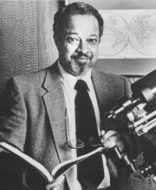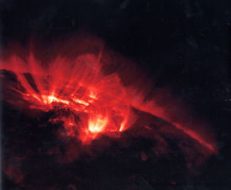African American physicist, Arthur B.C. Walker Jr. (1936-2001), helped develop solar telescopes to image the Sun’s corona.

Photograph courtesy of Victoria Walker
Arthur Bertram Cuthbert Walker II, known to close friends as Art Walker, was born in Cleveland on August 24, 1936, the only child of Cuthbert and Hilda Walker. From a young age, Walker was interested in the sciences, a passion that his parents supported.
His family moved to New York City in 1941, where Walker attended the Bronx High School of Science. There he faced many obstacles, including a teacher who tried to discourage him from studying science. But his mom stepped in and told the teacher her son would study whatever he pleased. She also encouraged him to apply to the Case Institute of Technology (now part of Case Western Reserve University) in Cleveland, Ohio. Walker earned a bachelor’s degree in physics with honors n 1957. He then earned his master’s (1958) and doctorate (1962) degrees at the University of Illinois, Urbana-Champaign.
Following his education, Walker joined the U.S. Air Force as 1st lieutenant. His first assignment was in the weapons laboratory, where he developed instrumentation for a rocket-launched satellite to measure Van Allen belt radiation in Earth’s magnetic field. This work ignited his interest in space-based research.
Walker completed his military service in 1965 and joined the Space Physics laboratory of the Aerospace Corporation in southern California. There, he began investigating the Sun’s atmosphere, first at ultraviolet wavelengths and then X-rays, using rocket-launched instruments.
In 1974, Walker became a professor in the Applied Physics department at Stanford University. He was an active member of the Center for Space Science and Astrophysics and chaired the Astronomy Program between 1977 and 1980. He also had a lasting impact on Stanford’s academic life, as a majority of his 13 graduate students came from groups underrepresented in astronomy, namely women and African Americans. The first of his doctoral students was Sally Ride, the first female U.S. astronaut.

Soon after his arrival at Stanford, Walker became interested in technology for making mirrors that selectively reflect X-rays of a specific wavelength. Most notably, Walker worked with in Troy Barbee from Stanford’s Material Science Department and with graduate and undergraduate students to build and launch a solar-observing rocket in 1987. This sounding rocket was the first to obtain high-resolution images of the Sun’s corona at extreme ultraviolet wavelengths as well as X-rays. These pioneering images demonstrated the power of new X-ray mirror technology, now used in solar telescopes such as the Solar and Heliospheric Observatory/Extreme ultraviolet Imaging Telescope (SOHO/EIT) and Transition Region and Coronal Explorer (TRACE).
During the 1990s, Walker continued to develop novel X-ray optics systems for astronomical observations. Before his death in 2001, Walker was also initiating a program of X-ray spectroscopy for the detection of dark matter.
Apart from his work with X-rays, Walker was also the chair of the presidential commission that investigated the 1986 space shuttle Challenger disaster. In 2000, NASA awarded him the Distinguished Public Service Medal for his “four decades of distinguished scholarship, achievements in experimental space sciences, and extensive service to NASA and the nation in innumerable advisory and review boards.” In 2016 the Astronomical Society of the Pacific inaugurated the Arthur B.C. Walker II Award, which recognizes outstanding achievement by an African American in astronomy and for actively promoting diversity in science. The inaugural recipient was NASA mathematician Katherine Johnston.
Walker is remembered to have appeared calm and collected, with a historical anecdote for every occasion. Yet he was a strong protector of his territory, especially when it came to teaching and his graduate students. He didn’t shrink from responsibilities and taking on new tasks with an optimistic confidence. He had three children with his wife Victoria and enjoyed growing camellias and roses.
References:
 0
0








Comments
You must be logged in to post a comment.